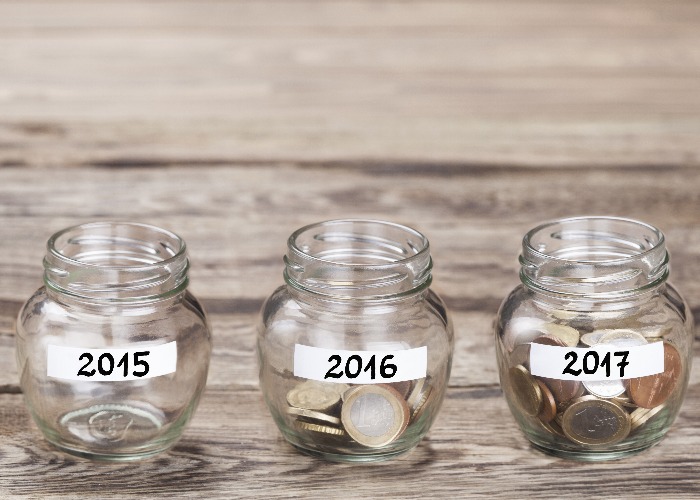Pension carry forward: how to increase your contributions in the 2016/17 tax year

Carrying forward your unused allowance could boost your pension pot by £130,000 for as little as £71,500, depending on your tax bracket.
Sections
- What is pension carry forward?
- Know the rules
- Have you already made any pension contributions?
- Did you have a pension in the previous years?
- PIPs can muddy the water
- Why a high earner has a low allowance
- The Money Purchase Annual Allowance trap
- What happens if you go over the allowance?
- When is the deadline for carrying over a pension?
What is pension carry forward?
Thanks to a little-known rule introduced this year, you can carry forward your unused pension allowances from the previous three tax years.
This means you could potentially pay £170,000 into your pension this tax year and receive tax relief on that money.
Know the rules
The rules regarding carry over are complex though – much like all the rules around pensions.
The tax relief available on pension contributions can make it a very attractive way of saving, particularly if you are approaching retirement age.
When you make a contribution into a pension scheme the Government immediately adds 20% to replace the basic-rate tax you’ve presumably paid on the money you are putting in.
If you are a higher or additional rate taxpayer you can claim back the rest of the income tax paid on your contributions via your tax return.
This means pension contributions get an automatic boost of between 20% and 60%, depending on your Income Tax rate.
No other investment manages that kind of immediate return.
However, you can’t pay an unlimited amount into your pension and claim that tax relief.
The annual limit is currently £40,000 (reduced from £50,000 in 2014/15) and the lifetime limit is £1 million.
So before you start planning to contribute more than £40,000 to your pension make sure you understand the complexities of carrying forward allowances.
You could start by checking your allowance on this carry forward calculator from pension firm Hargreaves Lansdown.
Have you already made any pension contributions?
You are allowed to contribute £40,000 to your pension this year.
Once you’ve used up that allowance you can go back and use any remaining allowance from the 2013/14 tax year, then the 2014/15 tax year and finally the 2015/16 tax year.
For each tax year where you want to carry forward allowance it must be unused.
That means you have to work out how much you paid into your pension that year and deduct it from the annual allowance for that year in order to see what you have left.
Compare Self Invested Personal Pensions (SIPPs) in the loveMONEY investment centre (capital at risk)
Did you have a pension in the previous years?
You can only carry forward annual pension allowances for years where you had a registered pension scheme.
This could have been a personal pension, a workplace pension or a defined benefit scheme.
If you didn’t have a pension you cannot claim the allowance for that tax year.
PIPs can muddy the water
When working out how much you contributed to your pension in previous tax years don’t forget to allow for different Pension Input Periods (PIPs).
These days, your pension contributions are grouped by tax year, but up until 8 July 2015 every pension plan had its own PIPs that could start on any day of the year.
As a result, contributions could be allocated to the annual allowance for that year, the previous year or the next one.
This means you need to look into your PIPs and make sure you know which tax year your contributions were allocated to so you can accurately calculate what unused pension allowance you have.
The good news is that, when PIPs were aligned in 2015, the Government allowed a higher £80,000 pension allowance for the period between 6 April 2015 and 8 July 2015 to make sure no-one was caught out.
This means you may be able to carry forward that bonus allowance to boost your pension contributions now.
Why a high earner has a low allowance
If you earn more than £150,000 you don’t get the full £40,000 annual pension allowance.
For every £2 you earn over £150,000 you lose £1 of your annual pension allowance up to a maximum reduction of £30,000.
Compare Self Invested Personal Pensions (SIPPs) in the loveMONEY investment centre (capital at risk)
The Money Purchase Annual Allowance trap
If you have entered into Flexi-Access Drawdown (FAD) in the last two years you may have lost your right to carry over unused pension allowance.
Taking any money from your pension as income after 6 April 2015 may mean you now only have a Money Purchase Annual Allowance (MPAA) rather than the full pension allowance.
MPAA is set at £10,000 a year – potentially falling to £4,000 in the next tax year – and you are not allowed to carry forward any unused allowances from previous years.
What happens if you go over the allowance?
If you pay too much into your pension in a tax year, and end up going over the annual allowances you will be hit with a tax charge on the excess amount.
The amount you’ve gone over by will be added to your income for that year and you’ll be charged income tax accordingly.
The excess could push you into a higher income tax bracket.
Before making a big pension contribution it could be worthwhile seeking expert advice to make sure you don’t end up with a hefty tax bill.
When is the deadline for carrying over a pension?
The deadline to make pension contributions this tax year is 5 April.
But, as Hargreaves Lansdown points out, anyone interested in carrying forward their allowance might want to do so before Chancellor Philip Hammond’s Budget speech on 8 March in case changes are announced.
“The new [pension allowance] restriction for high earners was announced in last year’s Budget and there have been seven other cuts announced in the last seven years,” it says.
There’s no way of knowing whether the chancellor has pension carry forward in his sights, but why give him the chance to take it away from you?
Most Recent
Comments
Be the first to comment
Do you want to comment on this article? You need to be signed in for this feature








